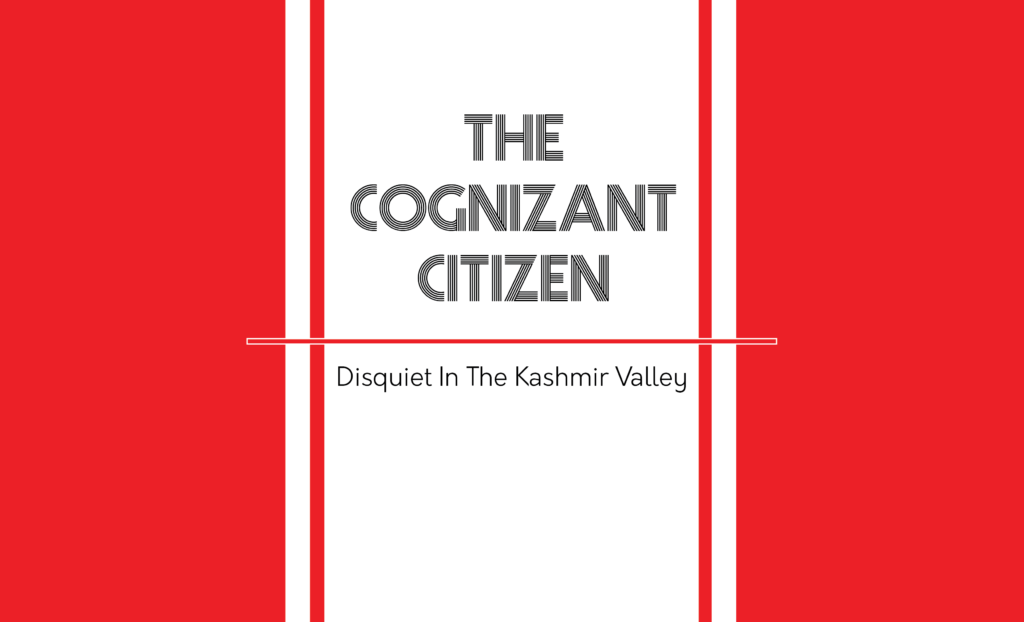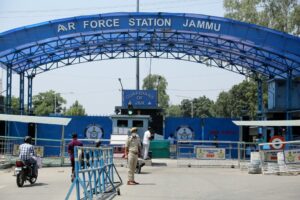
Stability in Jammu and Kashmir has always been a delicate issue. Geopolitical, social and economic issues have clashed together leaving a trace of uncertainty since the formation of the state. In August 2019, the scales of this unpredictable imbalance were tipped off even more. The scrapping of Article 370 resulted in alterations not only limited to a few lines on the map but also a creation of a power vacuum within the region. Jammu and Kashmir and Ladakh, the three separate political regions now, face challenges in the form of land reforms, new electoral constituencies and changes in the allocation of representatives in state assemblies and parliament. The last few weeks have seen the beginning of such turmoil slowly rising in the region. With the threat of drone strikes, religious tensions and a new delimitation program, tension and anxiety amongst the people of the erstwhile state have been at an all-time high.
Drone Strikes

In Jammu, two explosive unmanned drones detonated at an Indian military facility in a first of its kind terror attack causing structural damage and minor injuries to two personnel. Previously, drones have been commonly spotted in the region for surveillance and delivering arms and explosives to armed groups.
Two more drones were spotted flying over the Kaluchak military base three days after this incident while security was on high alert. The drones were engaged with firing, following which they retreated. Unless the drones are intercepted, it is impossible to confirm their origin at present. Troops are engaged in search operations for possible launch sites which may be located within a few kilometres of the sightings.
The drone strikes have resulted in increased security across the region, leading to a ban on the sale or possession of lightweight flying machines. The attack poses an unprecedented challenge to the Indian military as tactics to detect and intercept drones are yet to be fully developed.
Religious Tensions
Recent allegations of forced conversion of two Sikh women have sparked communal controversy in Indian-administered Kashmir. The Sikh community alleges that the women were forcibly abducted and converted into Islam, triggering protests and calls for laws on interfaith marriages in the region.
Nineteen-year-old Manmeet Kaur’s family filed a complaint after she fled home with her partner Shahid Nazir Bhat and converted to Islam. Shahid was subsequently arrested, and Manmeet’s court hearing was met with a large crowd demanding she be handed over to her family. The other interfaith couple, Danmeet Kour and Muzzafar Shaban had married in June 2014; however, Danmeet recently left her family to go live with Shaban. Her family contacted the police leading to Shaban’s arrest on kidnapping charges, and Danmeet was handed over to her family. Danmeet has confirmed that she has married and converted by choice, while her husband has been in custody for over a month.
Sikhs comprise 2% of the region’s population and have resided in the villages of North and South Kashmir harmoniously despite several armed rebellions. The tension between the Sikh and Muslim communities has become a cause for rumours leading to further controversies. Some Sikh religious groups have claimed that Manmeet was a minor and was forcibly married to a 60-year old man. Others claim that the marriages were carried out at gunpoint.
A local Sikh leader, Jagmohan Singh Raina, demands laws on forceful religious conversions while also stating that outsiders are spreading baseless rumours to exploit the situation and ignite controversy. Meanwhile, activists across the country demand that adult women have the right to choose their partner regardless of faith, as stated in the constitution.
Prospective Assembly Elections and the Delimitation process
On the 24th Day of June 2021, Prime Minister Narendra Modi held a meeting with various political leaders of Jammu and Kashmir. This is the first political meeting between the centre and the region’s leaders since the removal of its semi-autonomous status in August 2019. There have been talks about the delimitation of the territories in the region so as to conduct assembly elections and fill up parliamentary constituencies.
The Prime Minister informed that a steady delimitation process will not only ensure the restoration of democracy in the region but will also improve the centre and state relations. However, there have been tensions in the regional politics of Jammu and Kashmir. The alterations in the electoral map of J&K pose a threat to the political power of areas like the Kashmir Valley, and Chenab and Pir Panjal areas of the Jammu region. The demographics of these areas represent a Muslim majority, and the formation of new electoral constituencies has increased the anxieties of many living in the aforementioned regions. In the present Assembly, Jammu and Kashmir regions have 37 and 46 seats respectively.
There have been reports of the delimitation commission arriving in Jammu and Kashmir earlier last week. While the distribution of electoral constituencies only relies on the statistics of the population; various other factors which are not related to demographics, like— inaccessibility in Pakistan occupied Kashmir (PoK), rough and unpredictable terrain, and communication barriers might affect the delimitation process. All of these issues have caused apprehensions and anxiety among the locals as well as the political leaders of J&K.
The Jammu and Kashmir Reorganisation Act, 2019 states that the J&K Assembly should have 90 seats excluding those which are part of PoK. Many political parties have rejected the urgent delimitation process stating that such an exercise is only plausible once the Census figures are published. Representatives of the Congress party stated that the restoration of statehood is more important in the region than delimitation.
“Restoration of Statehood for Jammu & Kashmir is a sine qua non for conducting the delimitation process. Until the full statehood for Jammu & Kashmir as part of the Union of India is restored, there would be no meaning for the delimitation commission to undertake any exercise. Unfortunately, the meeting called by the Prime Minister gave no concrete assurance in this regard. This is an essential confidence-building measure imperative for restoration of the democratic process in Jammu & Kashmir,” read the party memorandum.
Before the removal of Article 370, the delimitation of Parliamentary seats in J&K was conducted as per the Constitution of India; whereas the State Assembly seats were overlooked by the Jammu and Kashmir Representation of the People Act, 1957. However, after the bifurcation of the state into the Union Territories of Jammu and Kashmir and Ladakh—one governed by an elected legislature and the other not—the process and machinery required to conduct elections needs to be renewed.
Tensions between militant groups and government forces
On Sunday, 27th June 2021, in the Hariparigam village in Kashmir’s Pulwama district, militants attacked the house of Fayaz Ahmad Bhat, a 46-year-old Special Police officer(SPO). Two militants fired at Fayaz, his 42-year-old wife, and their 24-year old daughter. None of the three victims survived. Bhat had been an SPO in the J&K police for 14 years. Several SPOs have resigned from the service in recent years, facing threats from the militants. The Inspector-General of Police (IGP) informed that the militants belonged to the Jaish-e-Mohammed group and the process of identification was underway.
Militant activities have increased in frequency in the region over the past few weeks. On the 8th of July, an exchange of fire between Government forces and Militants took place. The exchange was triggered by a search operation in the area near the Line of Control. Additionally, there have been reports of 4 militants killed in 2 gunfights in south Kashmir. The gunfights took place in Pulwama and Kulgam regions at night. IGP later announced that 5 militants were involved in 3 gunfights around the Kashmir region— all within a 24-hour timeframe.
On the 7th of July, government forces observed attempts of infiltration near the LoC and increased personnel and surveillance around the Rajouri district. The same day, Kashmir Police announced that the oldest commanders of the Hizb-ul-Mujahideen were killed in the Kralgung area of Handwara. The operation was launched by a joint team of Police, the Indian Army and CRPF forces. On Monday, 5th July, a mysterious blast took place in the town of Doda district. The blast was near the District Police Lines and resulted in police personnel being injured.
The state of Jammu and Kashmir has been the victim of political, religious, economic and military tensions since Indian Independence. The aberration of article 370 triggered a series of unrest in the delicately forged balance of J&K geopolitics. The onset of the Covid-19 pandemic froze any further political developments in the region for a year. However, there has been a stir in the democratic soup of the valley, triggering a race to grab the power handle. The economy of the state took a serious toll because of the pandemic. The new rules regarding landholdings rights of the locals—which came into effect after the scrapping of article 370—have further made the situation difficult. Increased militancy and religious tensions have added more fuel to the fire, and have excited the flames of instability in the region.
Written by Lavya Joshi and Pahal Duggal for MTTN
Edited by Avaneesh Jai Damaraju for MTTN
Featured Image By Vanshika Chanani for MTTN
Image Source: Hindustan Times

Leave a Reply
You must be logged in to post a comment.